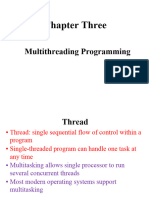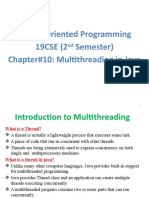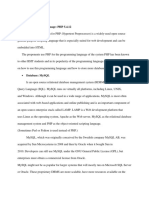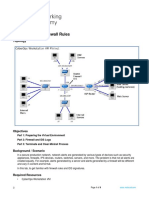0% found this document useful (0 votes)
12 views18 pagesMultithreading
The document provides an overview of multithreading in Java, explaining the concept of threads, their states, and the lifecycle of the main thread. It also discusses daemon threads, thread creation methods, synchronization techniques, and safe practices for suspending and stopping threads. Key examples illustrate how to create and manage multiple threads while ensuring data integrity through synchronization.
Uploaded by
Sheryl AruliniCopyright
© © All Rights Reserved
We take content rights seriously. If you suspect this is your content, claim it here.
Available Formats
Download as PPTX, PDF, TXT or read online on Scribd
0% found this document useful (0 votes)
12 views18 pagesMultithreading
The document provides an overview of multithreading in Java, explaining the concept of threads, their states, and the lifecycle of the main thread. It also discusses daemon threads, thread creation methods, synchronization techniques, and safe practices for suspending and stopping threads. Key examples illustrate how to create and manage multiple threads while ensuring data integrity through synchronization.
Uploaded by
Sheryl AruliniCopyright
© © All Rights Reserved
We take content rights seriously. If you suspect this is your content, claim it here.
Available Formats
Download as PPTX, PDF, TXT or read online on Scribd
/ 18
























































































